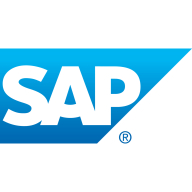

Find out what your peers are saying about SQLite, Oracle, SAP and others in Embedded Database.
| Product | Market Share (%) |
|---|---|
| SAP HANA | 9.2% |
| SQLite | 26.6% |
| Firebird SQL | 20.5% |
| Other | 43.7% |
| Product | Market Share (%) |
|---|---|
| SingleStore | 2.7% |
| Amazon RDS | 19.1% |
| MongoDB Atlas | 14.0% |
| Other | 64.2% |


| Company Size | Count |
|---|---|
| Small Business | 26 |
| Midsize Enterprise | 11 |
| Large Enterprise | 61 |
| Company Size | Count |
|---|---|
| Small Business | 4 |
| Large Enterprise | 3 |
SAP HANA, also known as SAP High-performance Analytics Appliance, is a multi-model database that stores data in its memory, allowing users to avoid disk storage. The product combines its robust database with services for creating applications. SAP HANA is faster than other database management systems (DBMS) because it stores data in column-based tables in main memory and brings online analytical processing (OLAP) and online transaction processing (OLTP) together.
The column-oriented in-memory database design allows users to run high-speed transactions alongside advanced analytics, all in a single system. This provides companies with the ability to process very large amounts of data with low latency and query data in an instant. By combining multiple data management capabilities, the solution simplifies IT, helps businesses with innovations, and facilitates digital transformation.
The solution is structured into five groups of capabilities, categorized as:
There are three more SAP products that work alongside SAP HANA and complete the experience for users together. SAP S/4HANA Cloud is a ready-to-run cloud enterprise resource planning (ERP). SAP BW/4HANA is a packaged data warehouse, based on SAP HANA, which allows users to consolidate data across the enterprise to get a consistent view of their data. Finally, SAP Cloud is a single database as a service (DBaaS) foundation for modern applications and analytics across all enterprise data. All three products can combine with SAP HANA to deliver to users an optimized experience regarding their data.
SAP HANA Features
Each architectural group of capabilities of SAP HANA has various features that users can benefit from. These include:
SAP HANA Benefits
SAP HANA provides many benefits for its users. These include:
Reviews from Real Users
According to a database consultant at a pharma/biotech company, SAP HANA is a very robust solution with good data access.
Bruno V., owner at LAVORO AUTOM INF E COM LTDA, likes SAP HANA because the product offers advanced features, helps reduce hours, and makes it easy to find what you need.
SingleStore delivers the performance you need for enterprise AI, providing the most performant data platform for apps and analytics at scale. SingleStore enables organizations to scale from one to one million customers in one unified platform. SingleStore offers transparent pricing as shown here https://www.singlestore.com/pricing/
SingleStore caters to over 400 customers globally, including major banks and tech companies in 50+ countries and 40+ verticals. It offers seamless scaling for both transactional and analytical workloads, simplifying data management with its MySQL compatibility and real-time processing capabilities. SingleStore's distributed architecture ensures speed and reliability, efficiently handling large data volumes.
What are the key features of SingleStore?
What benefits can users find in SingleStore reviews?
Top banks and fintech companies leverage SingleStore for efficient management of financial data, while media and telecom industries use it for scalable metadata management and improved data processing. Retail and eCommerce sectors benefit from enhanced transactional capabilities, reducing the need for separate databases and optimizing reporting processes. SingleStore's capacity to unite diverse workloads makes it a strategic choice across many sectors.
We monitor all Embedded Database reviews to prevent fraudulent reviews and keep review quality high. We do not post reviews by company employees or direct competitors. We validate each review for authenticity via cross-reference with LinkedIn, and personal follow-up with the reviewer when necessary.